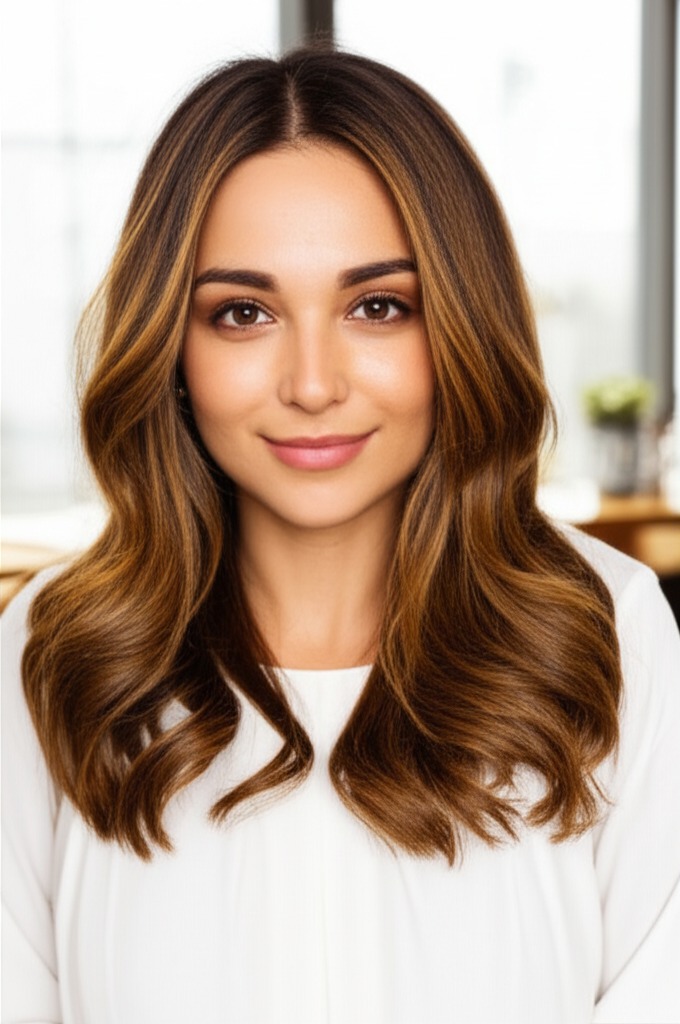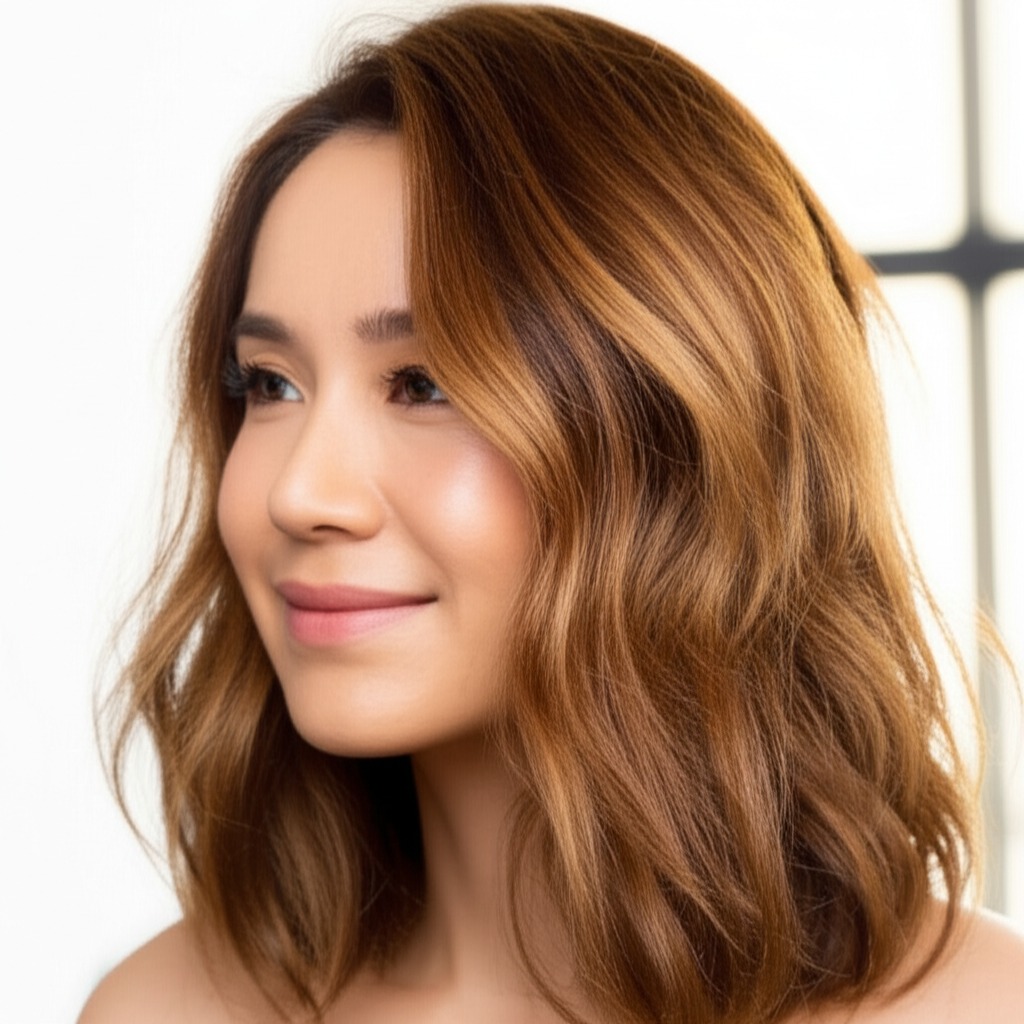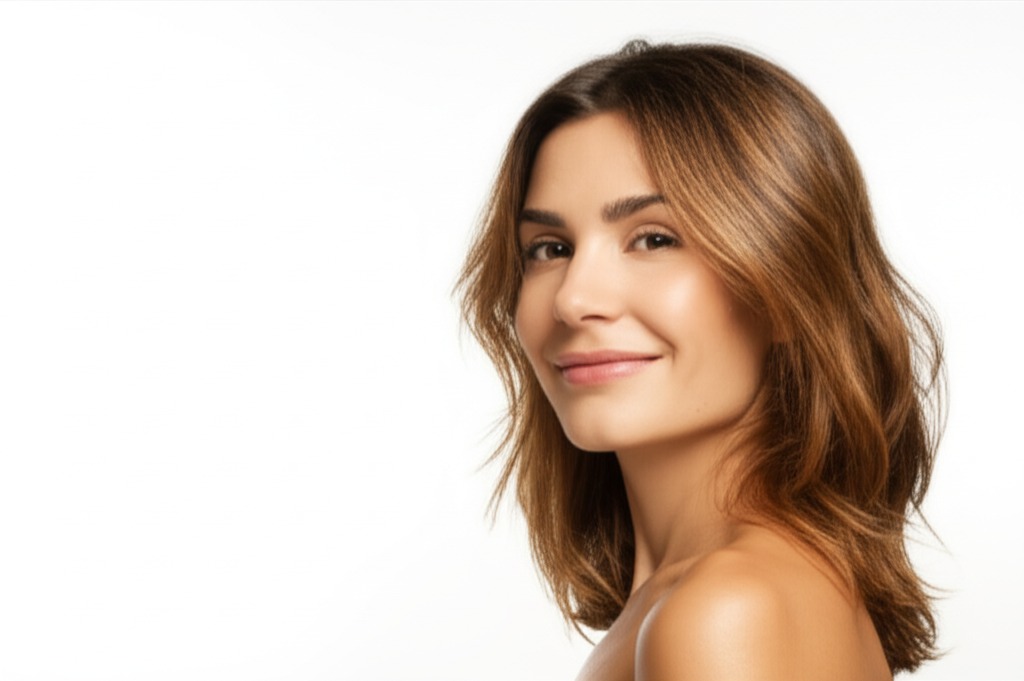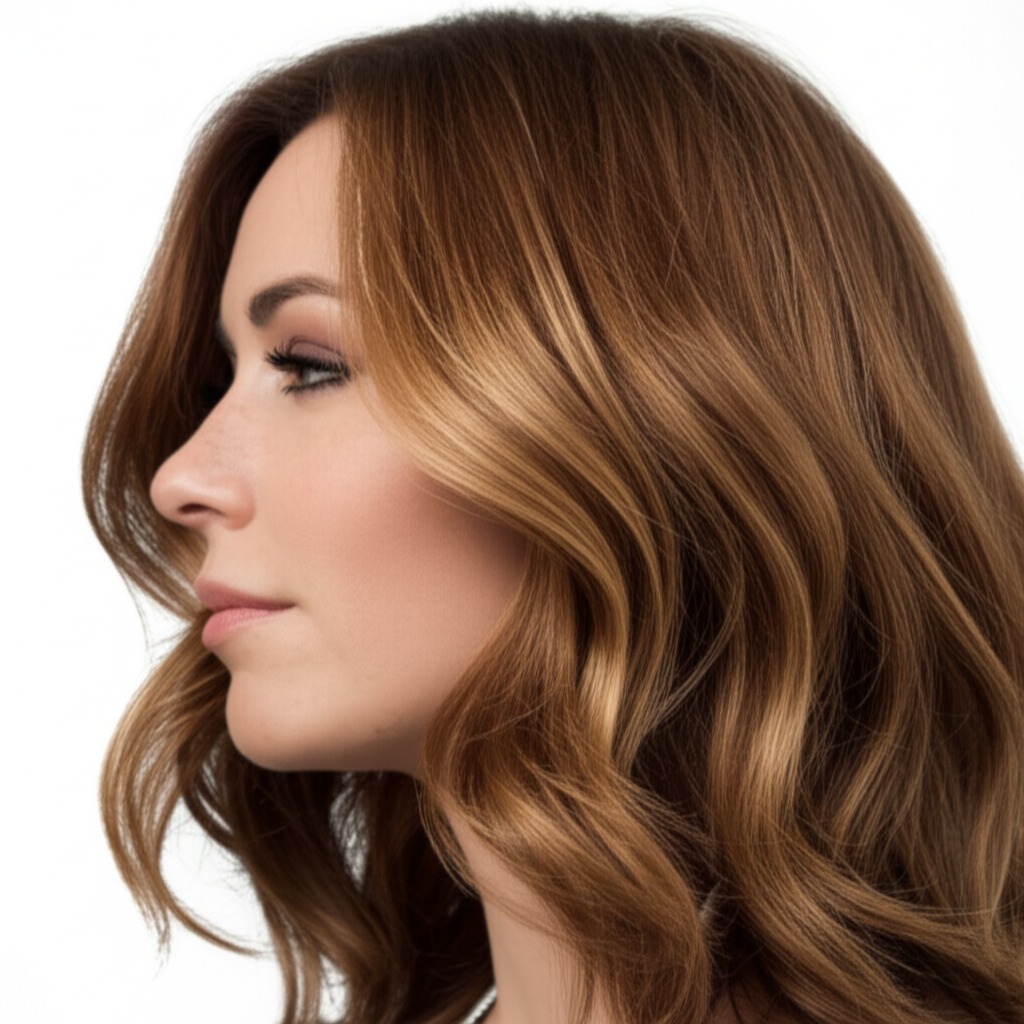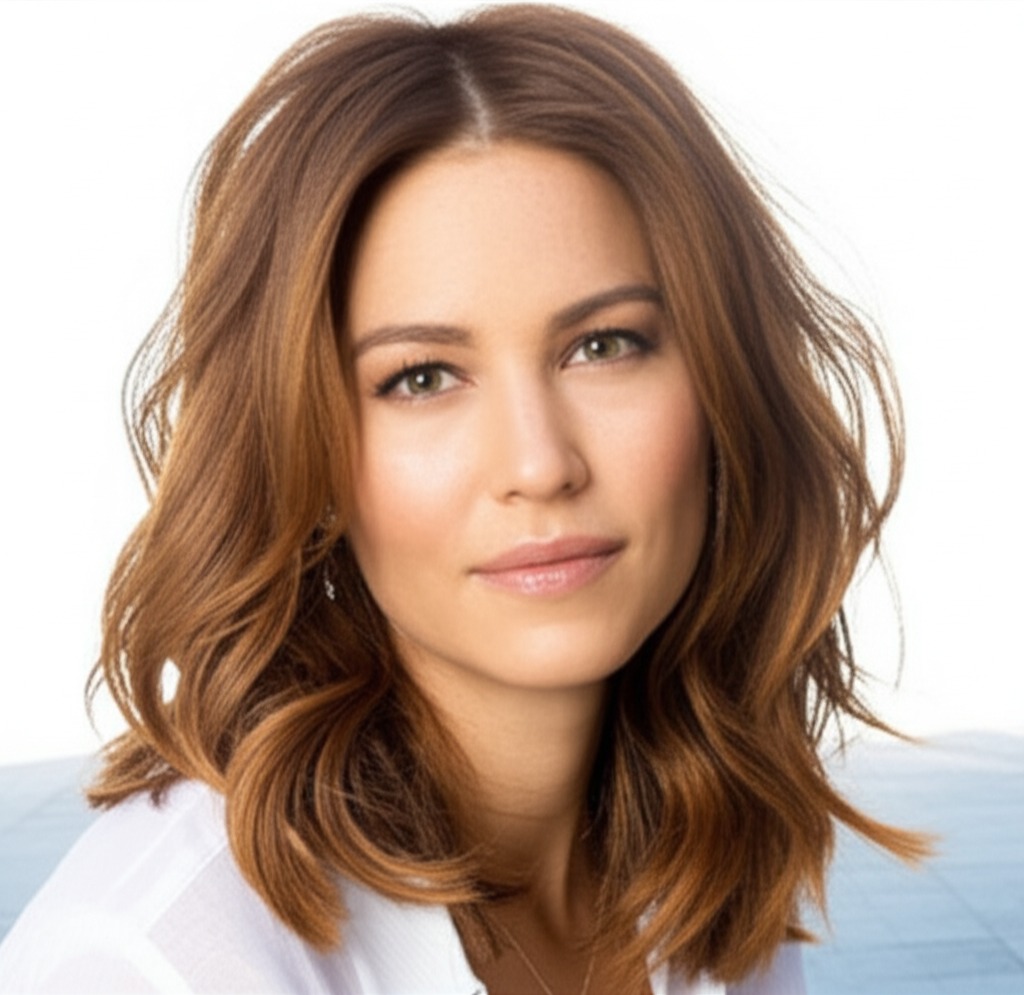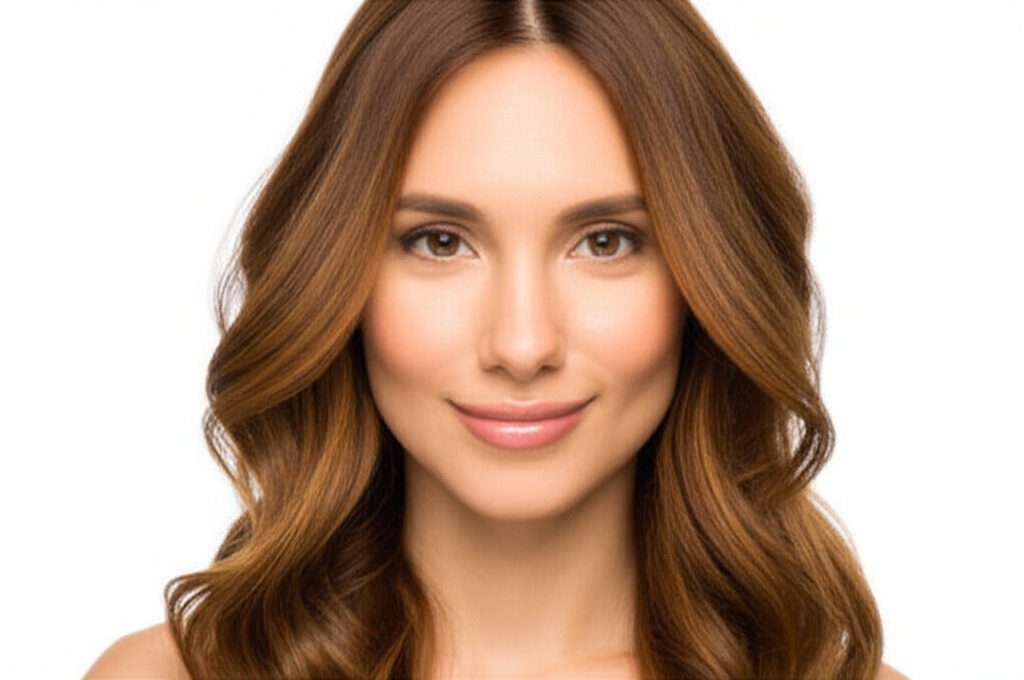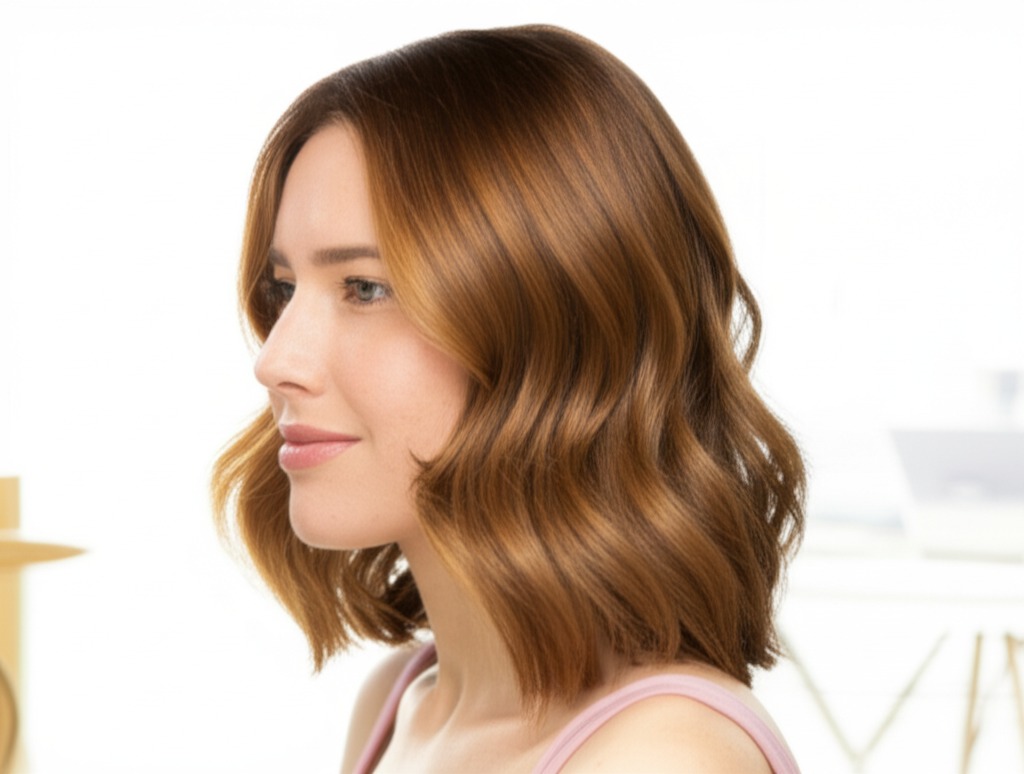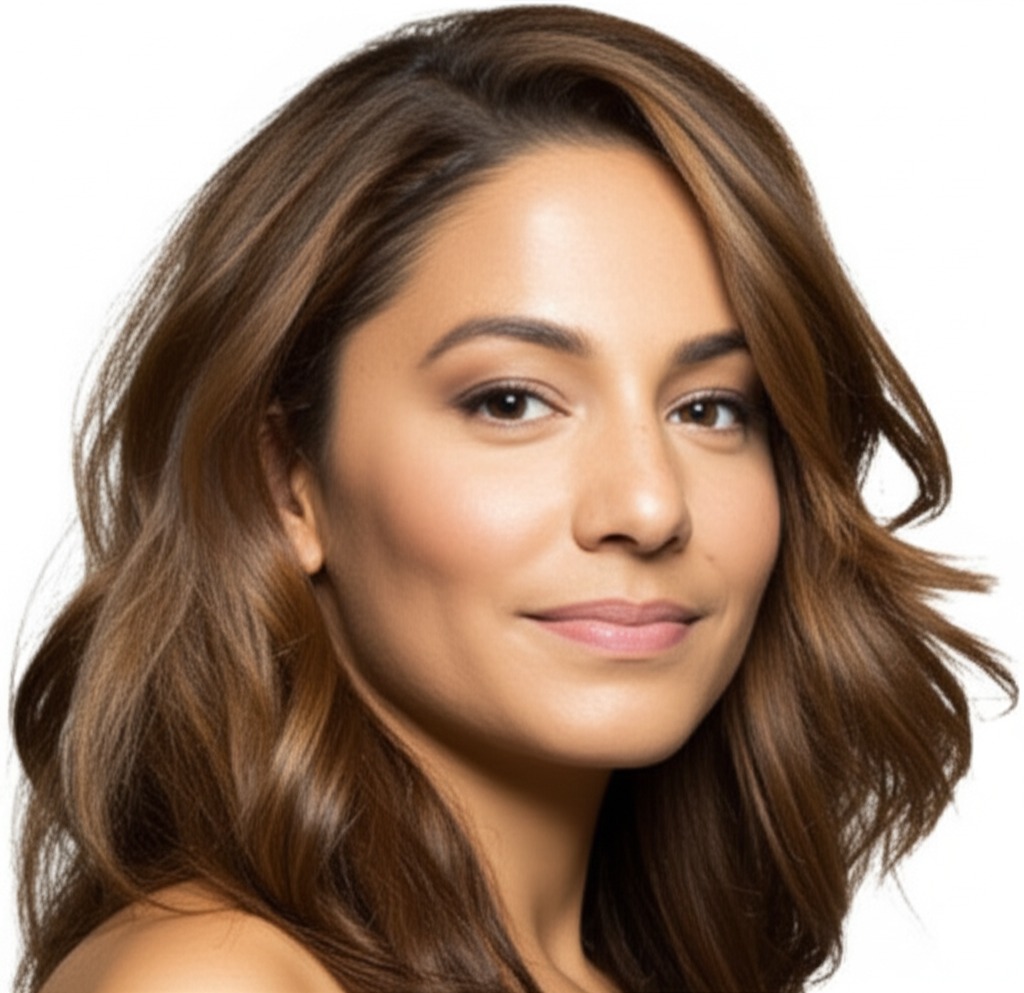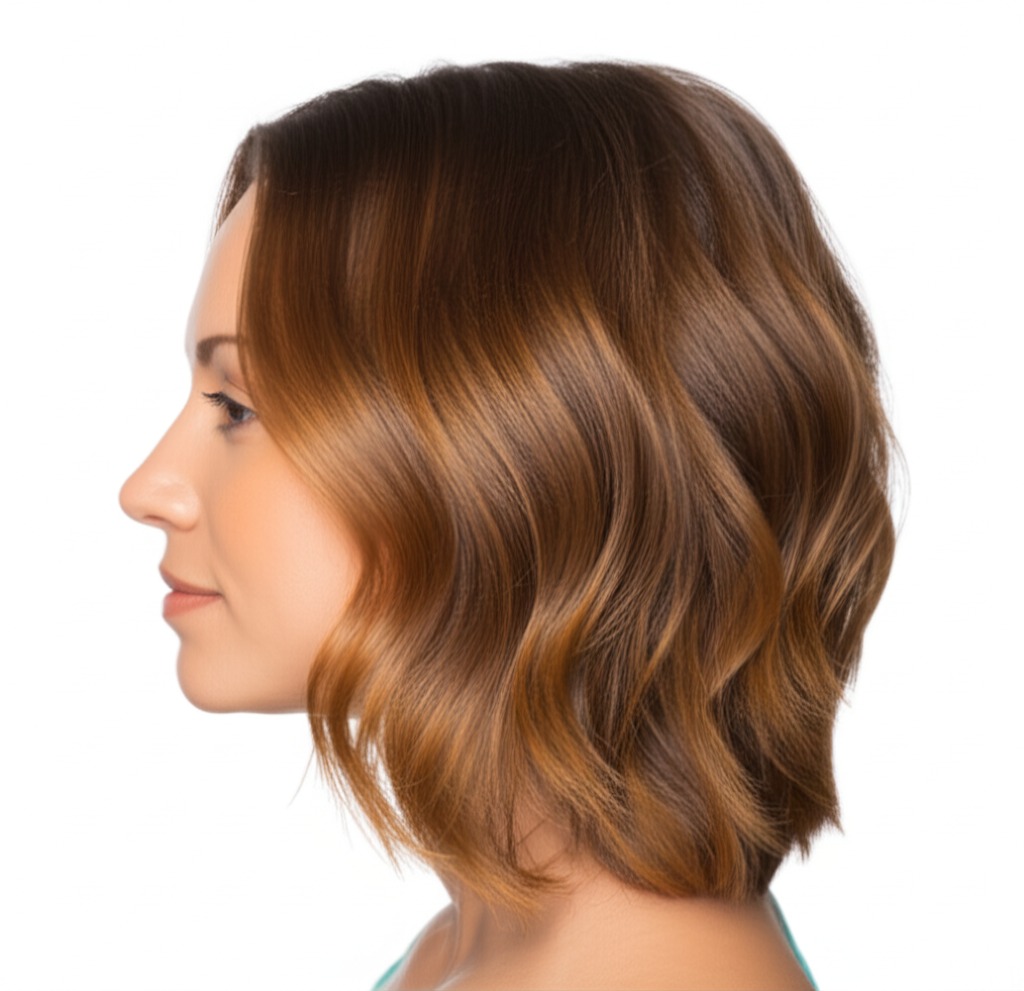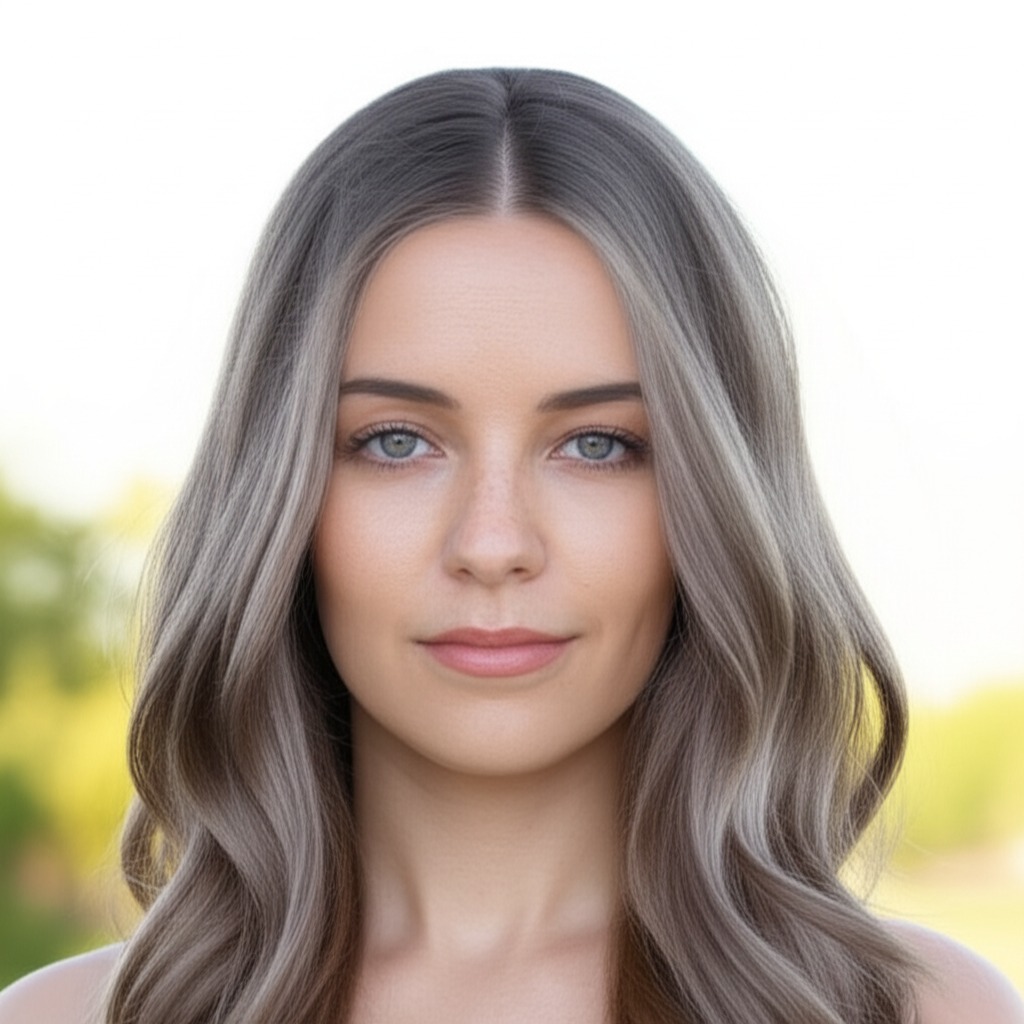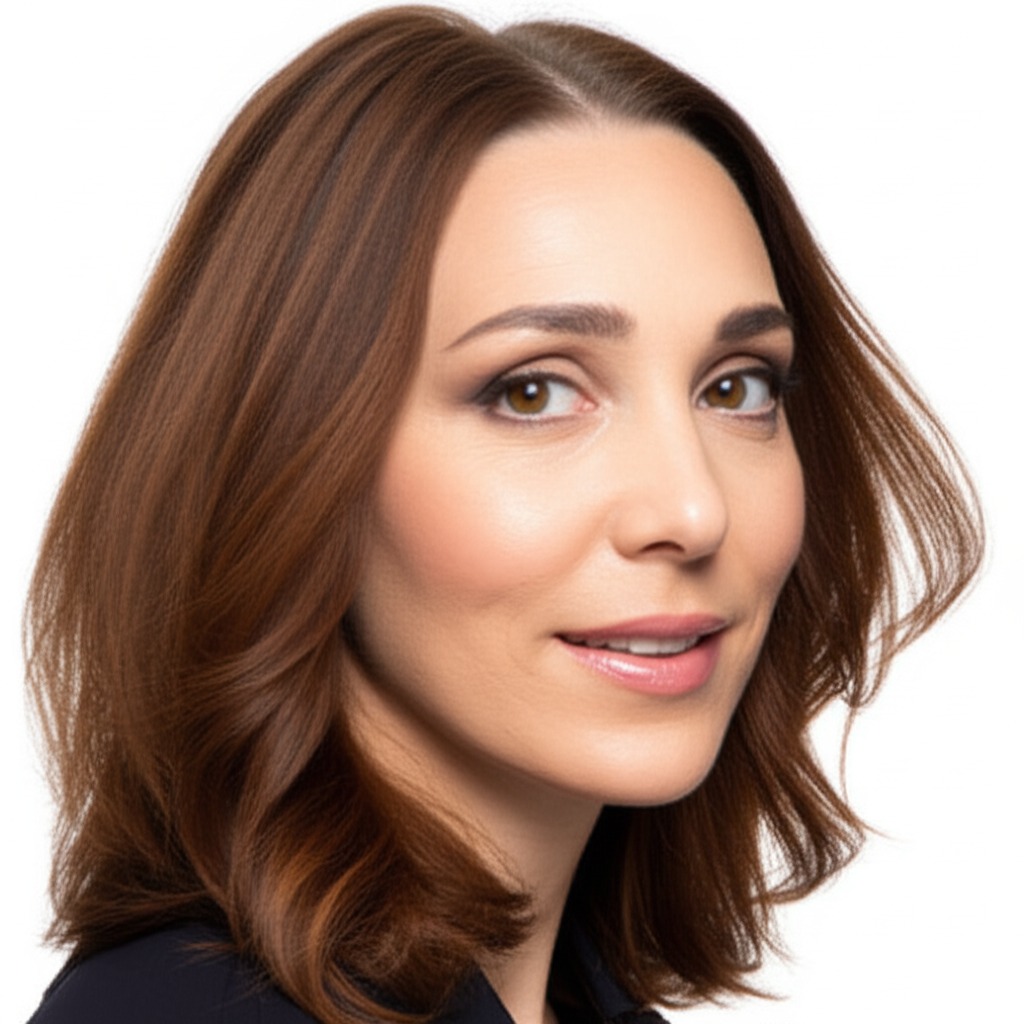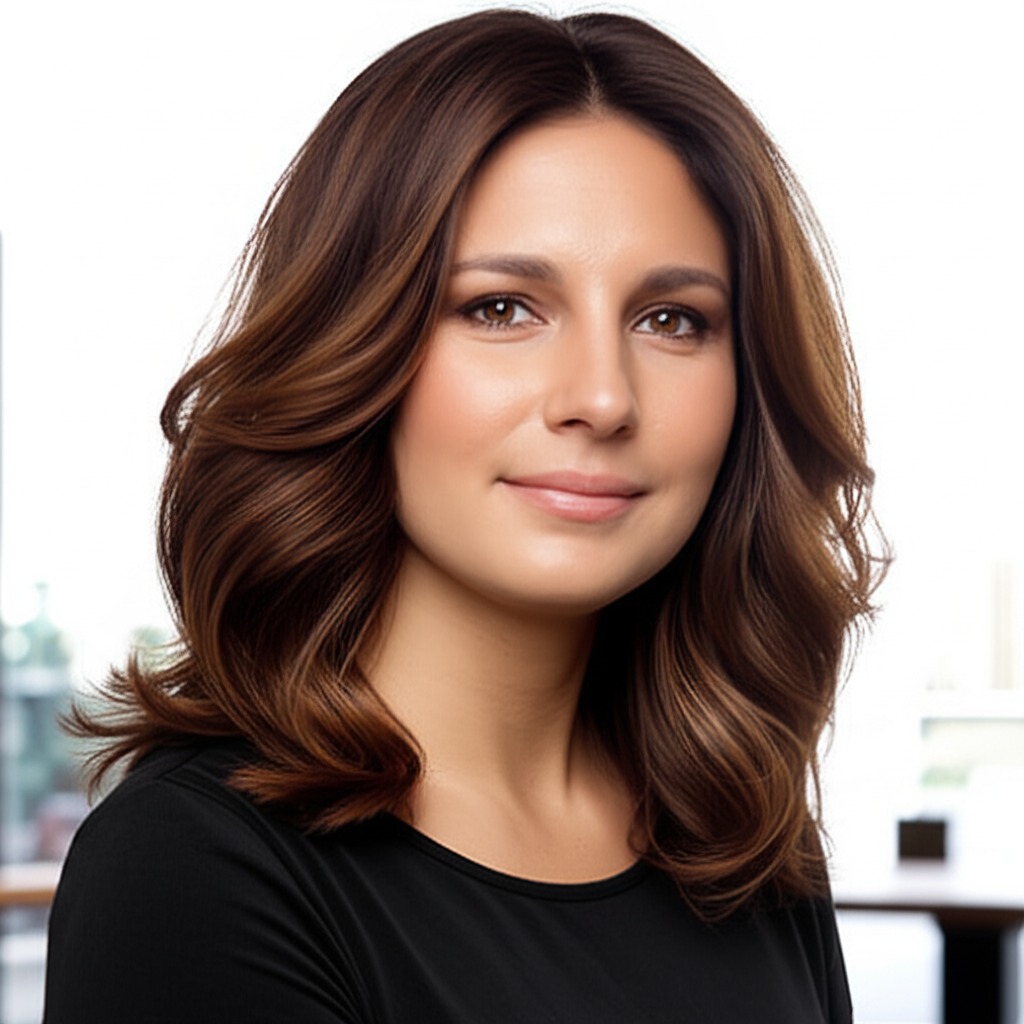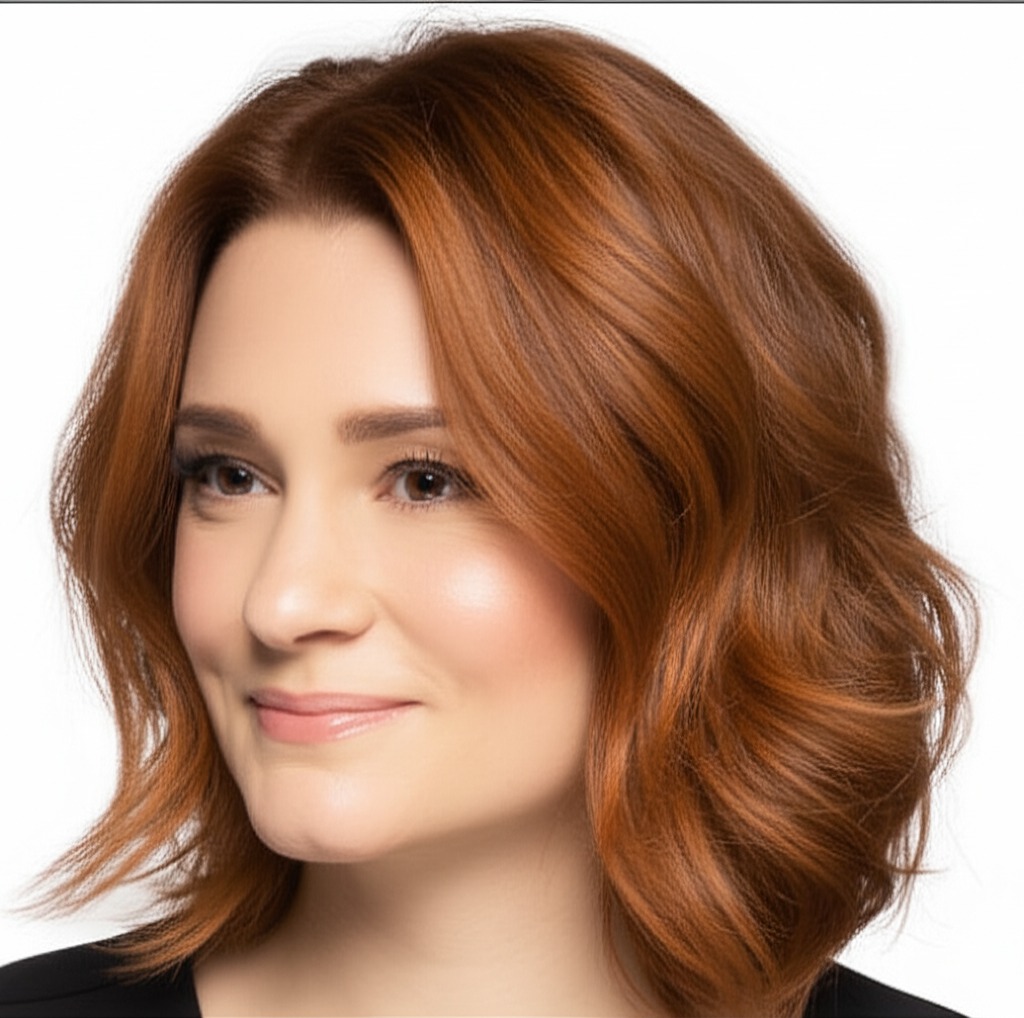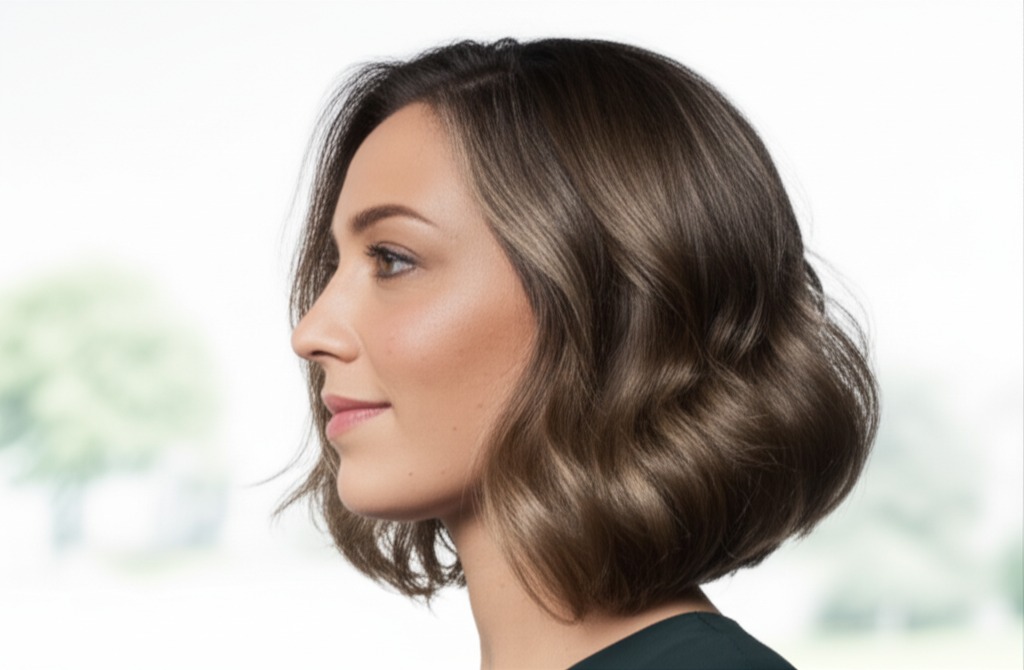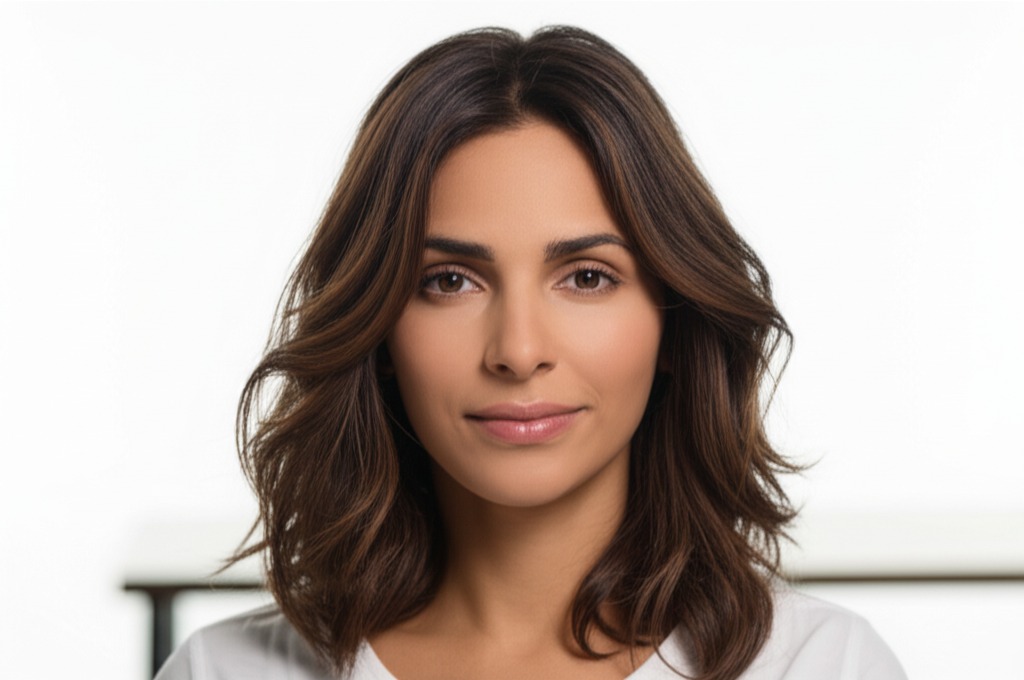#Caramel Brown Hair Color: A Warm & Delicious Guide
Caramel brown is a universally flattering hair color that evokes feelings of warmth, richness, and approachability. It’s more than just “brown” – it's a carefully crafted blend of tones that can be customized to suit almost any style and personality. This guide will break down everything you need to know about achieving and maintaining gorgeous caramel brown hair.
#1. Understanding the Shade: Defining Caramel Brown
Caramel brown isn’t one single color; it's a family! It’s characterized by its warm undertones, mimicking the delicious hues of melted caramel candies. Let's break down how to define this shade further:
- Undertone: Primarily warm. This means you'll see hints of golden yellow, honey, or even reddish-brown within the brown base. While generally warm, a skilled colorist can tweak it towards neutral by incorporating subtle cooler tones (think taupe) if needed for specific skin tones – more on that later!
- Depth (Levels): Hair color levels range from 1 (jet black) to 10 (lightest blonde). Caramel brown typically sits between level 4 and level 7.
- Level 4-5: A deeper, richer caramel brown - great for those wanting a more subtle change or with darker natural hair.
- Level 6-7: A medium caramel brown – the most common interpretation of the shade; offers good dimension and shine.
#2. Who Does Caramel Brown Flatter? Finding Your Perfect Match
Caramel brown is incredibly versatile, but understanding its best pairings will ensure a stunning result:
- Skin Tone & Undertone:
- Warm Skin Tones (yellow/golden undertones): This color really shines! The warmth complements your complexion beautifully. Think of people with olive skin or those who tan easily.
- Neutral Skin Tones: You're in luck! Caramel brown generally works well, allowing for adjustments to lean warmer or cooler depending on personal preference.
- Cool Skin Tones (pink/blue undertones): While possible, it requires careful consideration. A slightly more neutral caramel brown with a touch of taupe can work if the warmth isn’t overwhelming. A consultation is key!
- Eye Colors: Caramel brown enhances almost all eye colors:
- Brown Eyes: Makes them appear even richer and more luminous.
- Blue/Green Eyes: The warm tones create a beautiful contrast, making your eyes pop.
- Hazel Eyes: Highlights the different flecks of color within hazel eyes.
- Natural Level Starting Points:
- Levels 1-3 (Dark Brown to Black): Requires significant lightening and is best achieved gradually with highlights or balayage over several sessions.
- Levels 4-6 (Medium Brown): The easiest transition! Often achievable in one session, especially if aiming for a slightly lighter caramel brown.
- Levels 7-9 (Light Brown to Dark Blonde): Requires minimal adjustment; might just need toning and layering of caramel hues.
#3. Technique Options: From Solid Color to Dimensional Looks
How you apply the color significantly impacts the final result:
- Single Process: A solid, all-over color application. Best for a subtle change or covering grays evenly.
- Highlights/Lowlights: Adds dimension and depth. Caramel highlights brighten the hair, while caramel lowlights add richness.
- Babylights: Very fine, delicate highlights that mimic natural sun-kissed strands – creates a soft, blended effect.
- Gloss/Toner: A semi-permanent treatment used to adjust tone (warmth or coolness), boost shine, and refresh color between salon visits. Essential for maintaining caramel brown!
- Balayage-Effect vs Solid: Balayage involves hand-painted highlights that create a soft, gradual transition from dark roots to lighter ends – very natural looking. A solid application gives an even tone all over.
#4. Maintenance & Longevity: Keeping Your Caramel Brown Glowing
Caramel brown requires commitment, but the results are worth it!
- Wash Frequency: 2-3 times per week is generally sufficient. Overwashing can fade color and dry out hair.
- Toner Refresh: Plan for a toner refresh every 4-8 weeks to combat brassiness and maintain the desired tone.
- Root Growth Pacing: Discuss with your stylist how quickly you want your roots to show. Balayage allows for more gradual root growth, while single process requires more frequent touch-ups.
- Budget/Time Planning:
- Low Budget & Time Commitment: Single process or balayage with minimal lightening. Toner refreshes are relatively quick and inexpensive.
- Moderate Budget & Time Commitment: Highlights/lowlights combined with a gloss. Expect longer salon visits every 6-8 weeks.
- Higher Budget & Time Commitment: Extensive lightening (for darker starting levels) requiring multiple sessions, followed by regular highlights and toning.
#5. Seasonality & Pairing With Cuts: Adapting Your Look
Caramel brown is adaptable to any style!
- Common Cuts:
- Bob/Lob: Adds a chic, modern feel. Layers enhance dimension.
- Long Layers: Creates movement and flow; caramel highlights catch the light beautifully.
- Pixie Cut: Highlights face-framing pieces for an edgy yet soft look.
- Seasonal Tweaks:
- Fall/Winter: Lean towards deeper, richer caramels with hints of chocolate.
- Spring/Summer: Opt for lighter, brighter caramel tones with golden highlights.
- Event/Occasion Picks:
- Work: A more subtle caramel brown (level 4-5) is professional and polished.
- Daytime: A medium caramel brown (level 6-7) with babylights adds warmth and vibrancy.
- Evening: Embrace bolder, brighter caramels with shimmering glosses for a glamorous look.
- Weddings: A soft, romantic caramel brown with delicate highlights is perfect for any wedding guest or bridal party member.
#6. At-Home Care: Protecting Your Investment
Proper at-home care is crucial!
- Sulfate-Free Shampoo & Conditioner: Sulfates strip color quickly.
- Clarifying Cadence: Use a clarifying shampoo every few weeks to remove product buildup (but not too often!).
- Heat Protection: Always use heat protectant spray before using styling tools like hair dryers, straighteners, or curling irons.
- Color-Safe Styling Tips: Avoid harsh chemicals and excessive sun exposure. Rinse with cool water to seal the cuticle and lock in color.
- Product Checklist: Color-safe shampoo & conditioner, heat protectant, leave-in conditioner, dry texture spray (for volume).
#7. Common Pitfalls: Preventing Color Mishaps
Let's avoid these common issues!
- Brassiness: Warm tones can oxidize and turn orange/brassier over time. Regular toning is key. Purple shampoo can help in between salon visits (use sparingly!).
- Banding: Uneven color application, often seen with single process on previously colored hair. A skilled stylist will perform a strand test beforehand.
- Patchiness: Uneven lightening or highlighting; ensure thorough saturation and even product distribution.
#8. Pros & Cons: Weighing the Options
Pros:
- Versatility: Suits many skin tones, eye colors, and hair types.
- Warmth & Approachability: Creates a flattering and welcoming look.
- Dimensionality: Allows for customizable highlights and lowlights.
Cons:
- Maintenance Burden: Requires regular toning and salon visits.
- Fade Risk: Color can fade faster than darker shades, especially with improper care.
#9. Salon Consultation Script: Setting Expectations
Before your appointment, be prepared to discuss these points with your stylist:
- "I'm interested in caramel brown hair color."
- "What level of caramel brown would you recommend for my skin tone and natural hair color?"
- "Can we achieve this in one session or will it require multiple appointments?"
- "How often will I need to come back for touch-ups and toning?"
- “I'm concerned about brassiness. What steps can we take to prevent that?”
- "What at-home care products do you recommend?"
#10. FAQs: Your Burning Questions Answered
- Can I go from black hair to caramel brown in one session? Likely not without significant damage. A gradual lightening process is recommended.
- Will caramel brown make my teeth look yellow? A slightly cooler-toned caramel can help counteract this effect.
- How long does caramel brown last? The color itself will last several weeks, but the tone (warmth/coolness) fades faster and requires regular toning.
- Is purple shampoo safe for all hair types? It’s generally safe, but overuse can lead to a lavender tint – use sparingly!
- Can I do caramel brown at home? Possible, but professional results are highly recommended due to the complexity of color correction and lightening.
- What if my hair turns too orange after coloring it caramel brown? Use a blue-based toner to neutralize the orange tones. Your stylist can help with this!
